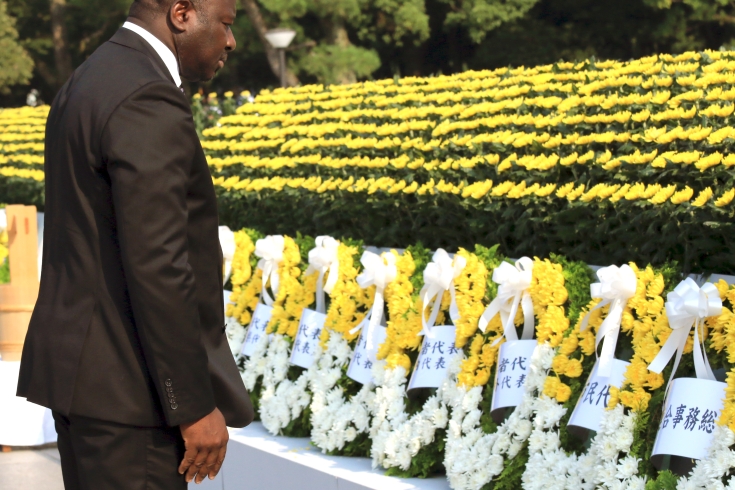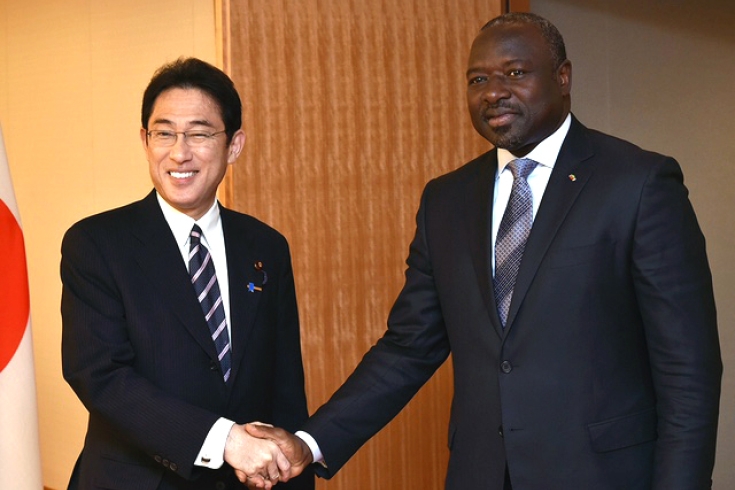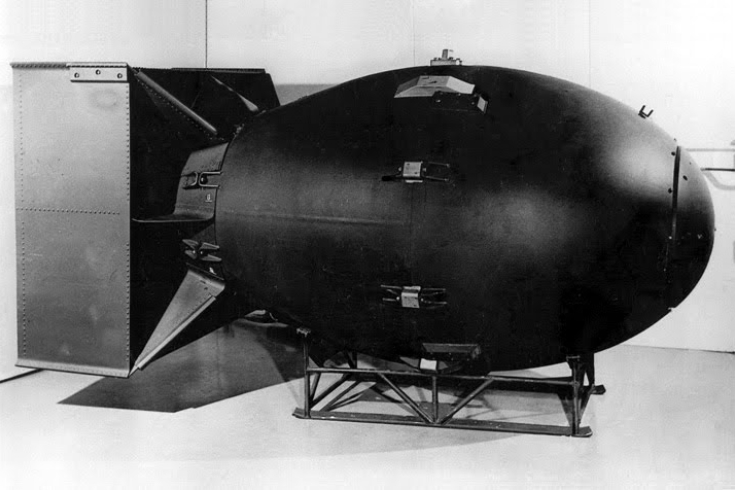70 years after the bombing of Hiroshima and Nagasaki
In Nagasaki, Zerbo met Hibakusha Makoto Takahara, aged 87
The 70th anniversary of the bombings of Hiroshima and Nagasaki is an important occasion not only to remember those who suffered and continue to suffer and to recall the dangers of nuclear weapons, but also to renew the call for a total ban on nuclear testing.


Zerbo and Japanese Foreign Minister Fumio Kishida (left)
I thank you dearly for Japan's role and support. We find a source of motivation in your personal leadership.
Zerbo said: "The upcoming GEM meeting comes at an important time, 70 years since Hiroshima and Nagasaki and on the threshold of the CTBT's 20th anniversary. Following the recent deal with Iran, this is a golden opportunity to move forward and take this vital step towards non-proliferation and disarmament."
The CTBT's early entry into force is a crucial step on the road towards a world free of nuclear weapons

GENBAKU NO-HI ceremony at the Vienna International Centre
The bombing of Hiroshima and Nagasaki are a reminder of what horrors nuclear weapons can inflict.
Background
On 16 July 1945, U.S. scientists working on the Manhattan Project successfully detonated the first-ever nuclear explosion in the ‘Trinity’ test at Alamogordo, New Mexico. With World War II still dragging on in the Pacific, preparations moved forward to use nuclear bombs against Japan.

The test site after detonation: a crater of fused soil, also known as “Trinite” radiates from ground zero.
On 6 August 1945, at 08:15, the first bomb was dropped on the centre of Hiroshima. ‘Little Boy’ was a gun-type fission bomb, using a conventional explosive charge to fire one sub-critical mass of uranium into another. This kind of device had never been tested before, but the scientists were confident it would work.
And it did. The bomb had an explosive yield of around 13 kilotons. At the moment of detonation, a fireball was generated that raised temperatures to 4,000 degrees Celsius, turning Hiroshima – where many buildings were made of wood and paper - into an inferno. The blast created shock waves faster than the speed of sound. This and the radiation immediately killed everything within one kilometre of the hypocentre.
After the blast, those who approached ground zero searching for the missing were exposed to radiation. Black rain, containing large amounts of radioactive fallout, caused widespread contamination. Estimates of casualties vary greatly. A more conservative estimate by the atomic archive lists 66,000 people killed immediately and a total death toll of 135,000, while the U.S.-Japanese Radiation Effects Research Foundation indicates a range of 90,000 to 166,000 deaths within the first four months.

'Fat Man' yielded 21 kilotons.
In the weeks that followed the bombings and Japan’s surrender, Hiroshima and Nagasaki became the object of intense studies by U.S. scientists. The Atomic Bomb Casualty Commission was founded to study the effects of radioactive contamination on the victims. Its results, including the extensive film and photo material taken at the time, remained classified for decades.

Nagasaki before and after
With nuclear testing, countries can develop even more powerful nuclear weapons. The CTBT bans all nuclear testing. At the CTBTO, we stand ready to implement this Treaty.
Following decades of public campaigning and arduous multilateral negotiations, the Comprehensive Nuclear-Test-Ban Treaty (CTBT) was opened for signature in 1996. It bans all nuclear explosions. The Treaty has yet to enter into force.

The 1951 U.S. 'George' Test was already over 10 times more powerful than the Hiroshima and Nagasaki bombs.
6 Aug 2015